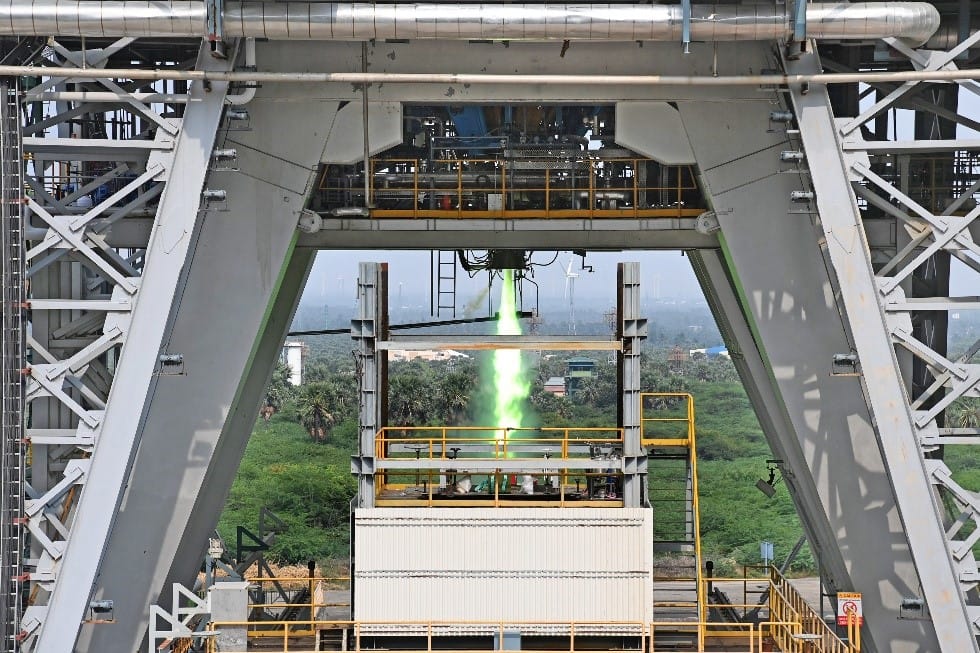
ISRO achieves a historic milestone with the first successful hot test of its 2000kN semicryogenic engine (SE2000), pavi
ISRO’s Semicryogenic Engine Test: A Giant Leap for India’s Space Ambitions
The Indian Space Research Organisation (ISRO) has marked a pivotal moment in its quest for advanced propulsion systems with the successful hot test of its 2000kN semicryogenic engine on March 28, 2025. This breakthrough brings India closer to mastering high-thrust semicryogenic technology, a feat achieved by only a handful of nations.
ng the way for enhanced LVM3 payload capacity. Discover the tech behind this leap!
Key Breakthrough: Power Head Test Article (PHTA) Validation
The intermediate configuration of the semicryogenic engine, dubbed the Power Head Test Article (PHTA), underwent rigorous testing at ISRO’s Propulsion Complex in Mahendragiri. The test validated critical subsystems, including:
- Turbopumps
- Pre-burner
- Control components
- Start-up system
Excluding the thrust chamber, the PHTA demonstrated seamless integration and performance, aligning perfectly with ISRO’s predictions. This success sets the stage for a series of advanced tests to certify the engine for flight.

SE2000 Engine: Technical Marvel with Global Significance
The SE2000 engine, fueled by non-toxic liquid oxygen (LOX) and kerosene, operates on an oxidizer-rich staged combustion cycle—a complex technology requiring advanced materials to withstand extreme pressures (180 bar chamber pressure) and oxidizer-rich environments. Key features include:
- Thrust: 2000 kN (scalable to 2600 kN)
- Specific Impulse: 335 seconds (enhancing fuel efficiency)
- Propellant Feed Pressure: Up to 600 bar
Developed in collaboration with Indian industries, the engine’s hardware and space-grade kerosene underscore India’s growing self-reliance in cutting-edge aerospace technology.
Semicryogenic Integrated Engine Test Facility (SIET): A National Asset
Inaugurated by PM Narendra Modi in February 2024, the SIET facility at Mahendraguri is a cornerstone of this achievement. Designed to test engines up to 2600 kN thrust, it features:
- High-pressure propellant storage systems
- Indigenous PLC-based control systems
- Advanced data acquisition tools
The facility’s success in handling ignition trials and high-pressure fluid dynamics highlights India’s infrastructural prowess.

LVM3 Upgrade: From 4 to 5+ Tonnes in GTO
The semicryogenic SC120 stage, powered by SE2000, will replace the existing L110 core stage of ISRO’s flagship LVM3 rocket. This upgrade promises:
- Payload Boost: From 4 tonnes to over 5 tonnes in Geostationary Transfer Orbit (GTO)
- Eco-Friendly Propellants: Safer LOX/kerosene vs. traditional hypergolic fuels
- Cost Efficiency: Higher performance at reduced launch costs
Challenges and Collaborative Triumph
Mastering oxidizer-rich combustion and sourcing heat-resistant materials posed significant hurdles. ISRO’s partnership with Indian industries for component manufacturing and kerosene production exemplifies the synergy driving this project.
ISRO achieves major breakthrough in Semicryogenic Engine development
ISRO has achieved a major breakthrough in the Semicryogenic development programme with the first successful hot test of the intermediate configuration of the 2000kN Semicryogenic engine, designated as Power…
— ISRO (@isro) March 28, 2025
read more
What’s Next for ISRO?
With the PHTA validated, ISRO will focus on:
- Thrust Chamber Integration
- Full-engine hot tests
- SC120 stage qualification
This progress positions India to compete globally in heavy-lift launch markets while supporting future missions like crewed spaceflight and deep-space exploration.
Conclusion: A New Era for Indian Spaceflight
ISRO’s semicryogenic engine breakthrough is more than a technical feat—it’s a strategic leap toward sustainable, high-capacity space missions. By boosting the LVM3’s payload and embracing greener propellants, India cements its role as a leader in next-gen space technology.









